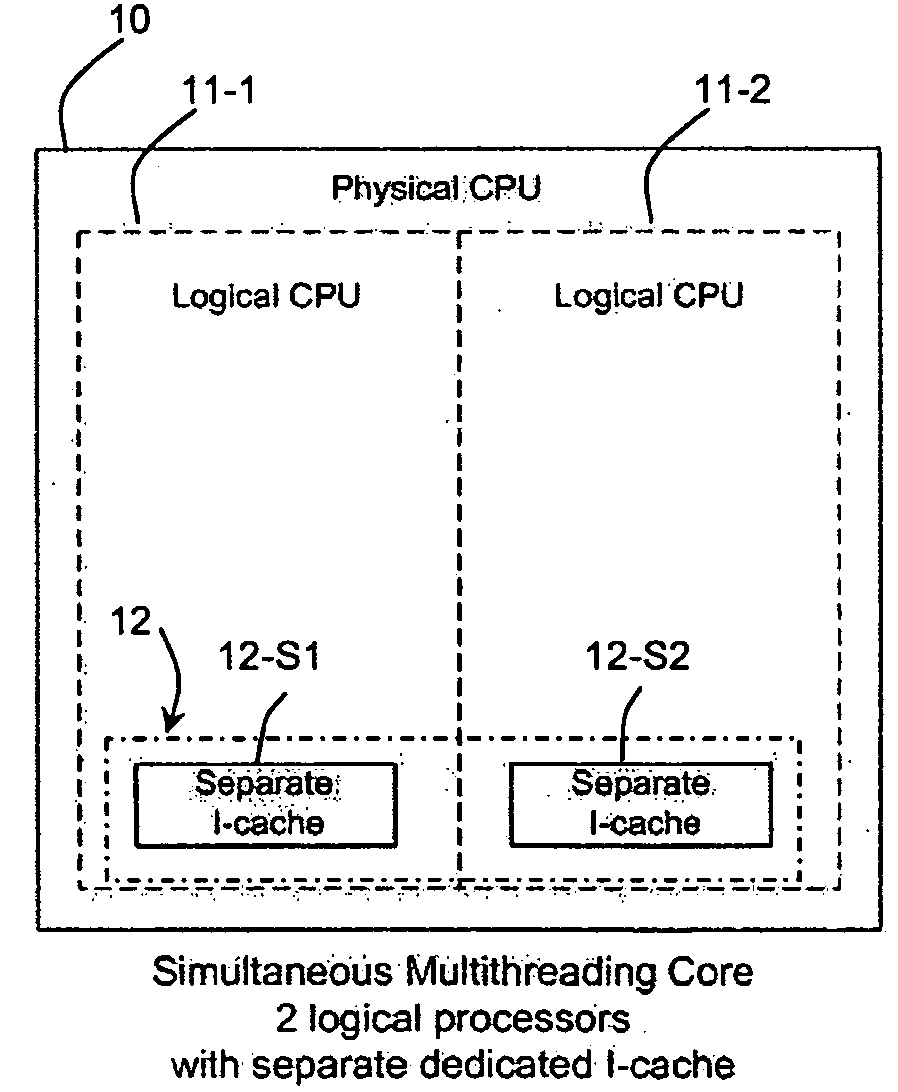Method and system for securing instruction caches using substantially random instruction mapping scheme
a technology of instruction mapping and instruction cache, applied in the field of instruction cache, can solve the problems of instruction mapping in the implementation of i-cache structures, i-cache architectures also create several security weaknesses,
- Summary
- Abstract
- Description
- Claims
- Application Information
AI Technical Summary
Benefits of technology
Problems solved by technology
Method used
Image
Examples
Embodiment Construction
[0021]The present invention provides a method and system for securing micro-architectural instruction caches. One embodiment involves implementing partitioned or separate I-cache modules in a processor to prevent I-cache analysis on logical or physical multi-core microprocessors with simultaneous multithreading. In one example, a single I-cache is partitioned into separate partitions, wherein each partition is used by a different processor. In another example, a dedicated I-cache is used for each logical and physical processor.
[0022]Further, for additional security, an I-cache mapping policy is utilized to reduce predictability of instruction mapping in conventional I-cache, wherein according to one embodiment of the invention, a substantially random instruction mapping strategy is implemented.
[0023]FIG. 2 shows a functional block diagram of a computing environment architecture 10 implementing an embodiment of the present invention. The architecture 10 includes an I-cache system 12 ...
PUM
 Login to View More
Login to View More Abstract
Description
Claims
Application Information
 Login to View More
Login to View More - R&D
- Intellectual Property
- Life Sciences
- Materials
- Tech Scout
- Unparalleled Data Quality
- Higher Quality Content
- 60% Fewer Hallucinations
Browse by: Latest US Patents, China's latest patents, Technical Efficacy Thesaurus, Application Domain, Technology Topic, Popular Technical Reports.
© 2025 PatSnap. All rights reserved.Legal|Privacy policy|Modern Slavery Act Transparency Statement|Sitemap|About US| Contact US: help@patsnap.com



